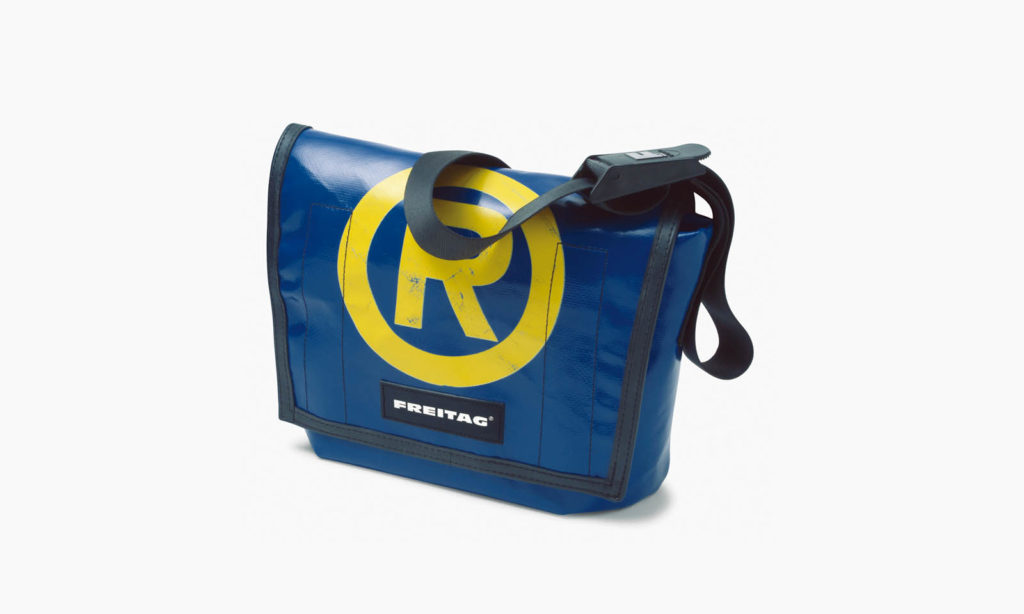
For several years now, there has been growing interest in the tarps and covers industry in becoming more eco-friendly—and in recycling in particular. However, when it came time to actually implement recycling programs, action lagged behind words. “To date, I am not seeing much focus on the recyclability factor in our industry,” said one prominent tarp producer. “That doesn’t mean it isn’t there; it’s just that I haven’t heard about it to any great extent.”
A lot has happened in the last five years, though. Recycling programs have increased, and those who have been at it for a while are receiving some much-deserved attention. Here are three companies that are finding innovative uses for old materials.
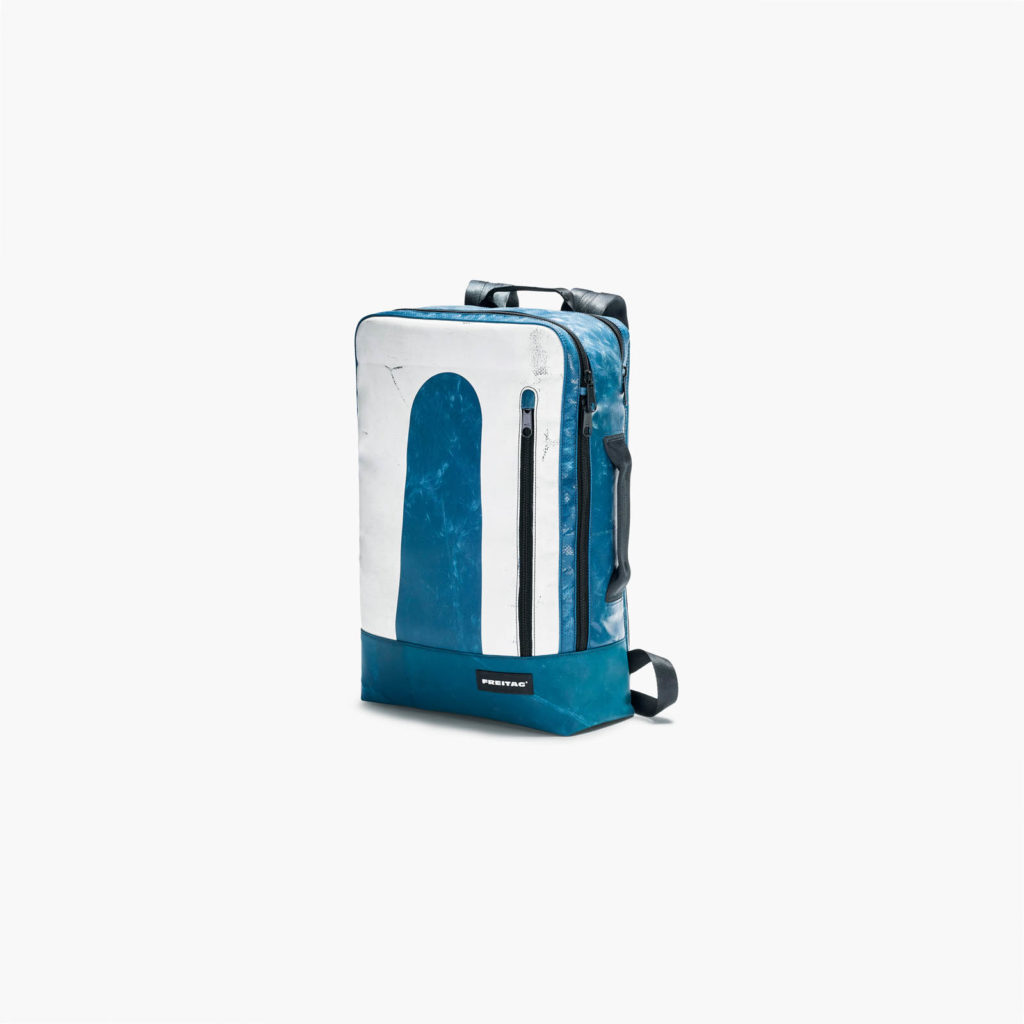
Transforming tarps to handbags
It’s no secret that Europe and Asia are sometimes ahead of the U.S. in recycling efforts. In the case of Freitag, which makes bags and accessories from recycled truck tarpaulins in Zurich, Switzerland, that may be simply because truck tarps are much more common on its side of the Atlantic.
“In the U.S., you don’t have these truck tarps on the road,” explains Elisabeth Isenegger, the company’s head of communications. “We have soft and colorful truck tarps, not the metal-based hard covers.”
From the time Markus Freitag first dragged an old tarp into his apartment in 1993 and made a bag from it, Freitag has opened 29 retail stores, partnered with 300 resellers, and established a robust, worldwide online market, boosted as of late by customers attracted to the company’s eco-friendly philosophy.
Freitag has a team of five people who work with European logistics companies to find and collect the used tarps, from the Netherlands to Portugal. “We try to collect as many and diverse tarps as possible,” says Isenegger. “It’s not only about getting a lot of them, but also a mix of colors and designs so that we can upcycle them into unique beautiful bags and accessories.”
After receiving the tarps (which the company pays for) Freitag removes anything unusable, cuts them into manageable sizes and washes them in recycled rainwater. A set of transparent molds is then used to cut out the bags, each one unique.
“It can be hard to find tarps,” she adds. “One of the natural bottlenecks in our business model is our concept that every bag is individual—but logistically it is not always easy to get enough diversity in the truck tarp pieces. But we really want to offer a wide variety; it’s what attracts our following.”
When Freitag first started, says Isenegger, many of its customers favored the company’s bags because they were unique, durable and functional. That’s changed over the years, though. “The younger people have discovered the brand because they are more focused on sustainability. That’s the biggest reason why they knock on our door.”
Billboards become tarps
Billboard Tarps, based in St. Paul, Minn., started out in 1998 as a liquidation business but quickly found that its real niche was “plucking things destined for the waste stream and finding alternative uses for them,” says company co-founder Matt McConville.
That took a variety of forms, but none as significant as its work developing new uses for old vinyl billboards.
“In the past, the billboard companies were just throwing them away—they were going into landfills,” says McConville. “We knew there were a lot of applications we could use for these billboards, from tarps to pond liners to companies that make bags out of them. There’s a lot of life left in them.”
What the billboard companies liked, says McConville, is that Billboard Tarps was willing to pay for the materials. “Customers pay us money so they should get something, we figured,” he says.
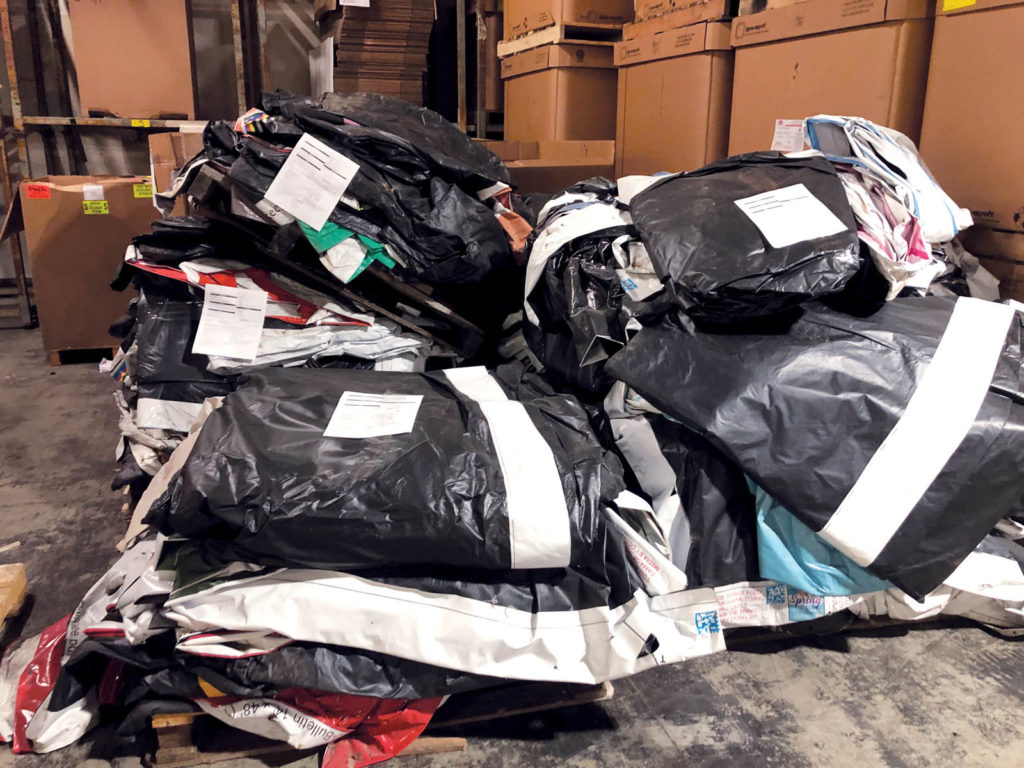
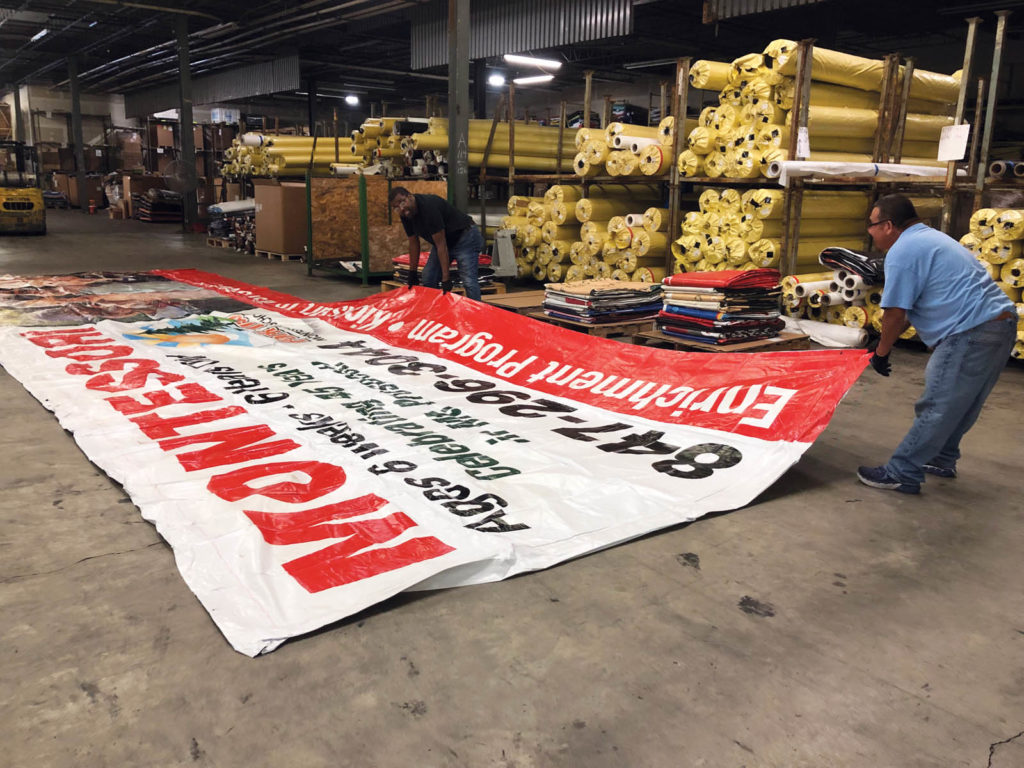

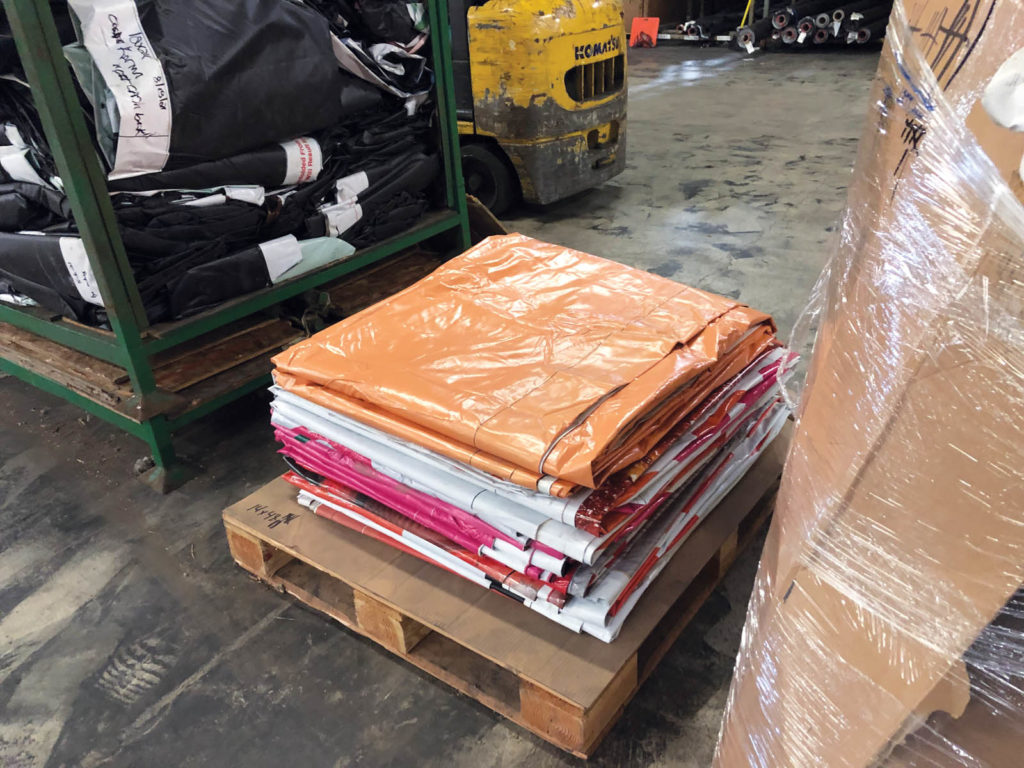
The company also started working with fabric manufacturers, taking their seconds—rolls of new materials that didn’t meet quality standards, or trimmings and leftovers. “We reuse and repurpose a couple of million pounds a year,” McConville explains. “It’s definitely a win-win situation.”
Plastics recycled into raw materials
Even poly materials companies use for shipping that are not suitable for upcycling can still be recycled into a number of useful products, as Yamaha is proving with their plastic cover recycling program. “Fourteen states, as of last year, have introduced legislation dealing with end-of-life in plastics,” says John O’Keefe, senior specialist in government relations for Yamaha’s U.S. marine business unit, based in Kennesaw, Ga. “Most of those laws would require the manufacturer—in this case, Yamaha—to come up with a plan and be able to dispose of any plastic that their product came wrapped in.
“Seeing that,” says O’Keefe, “and figuring that at some point there would be national legislation, we started looking at how we might go about dealing with this.”
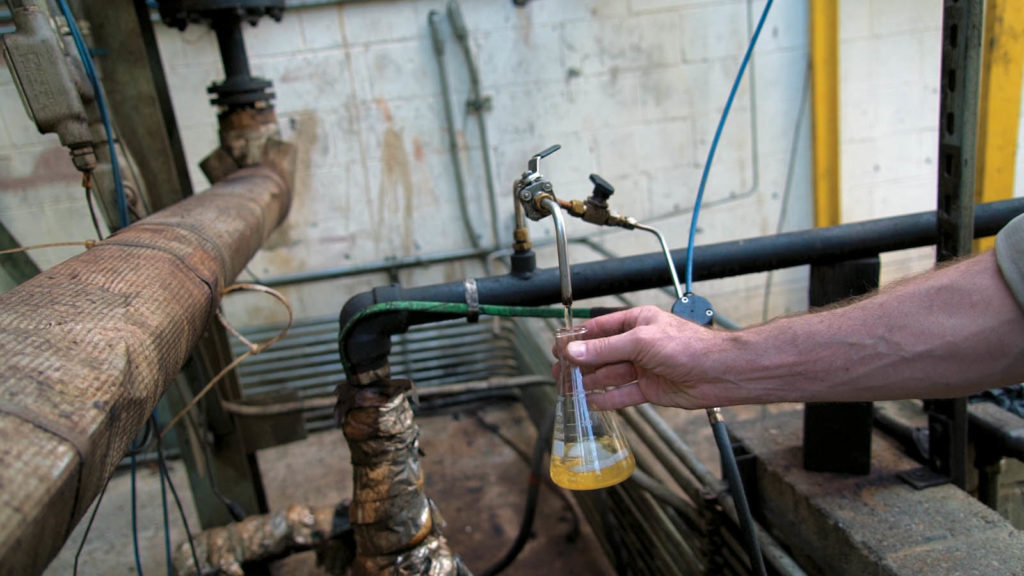
To start, Yamaha launched a pilot (as part of its Yamaha Rightwaters™ national sustainability program) with eight boat builders and two boat dealers, as well as its three boat manufacturing facilities, providing them with everything they needed to send plastic coverings back to the company so they could be recycled.
Some places were more prepared than others. “Depending on the builder, some shops are so immaculate you could eat off the floor and their waste plastic would be taken care of in a certain way,” says O’Keefe. “Others, they clean the floor once a week and maybe get rid of the plastic however they can.
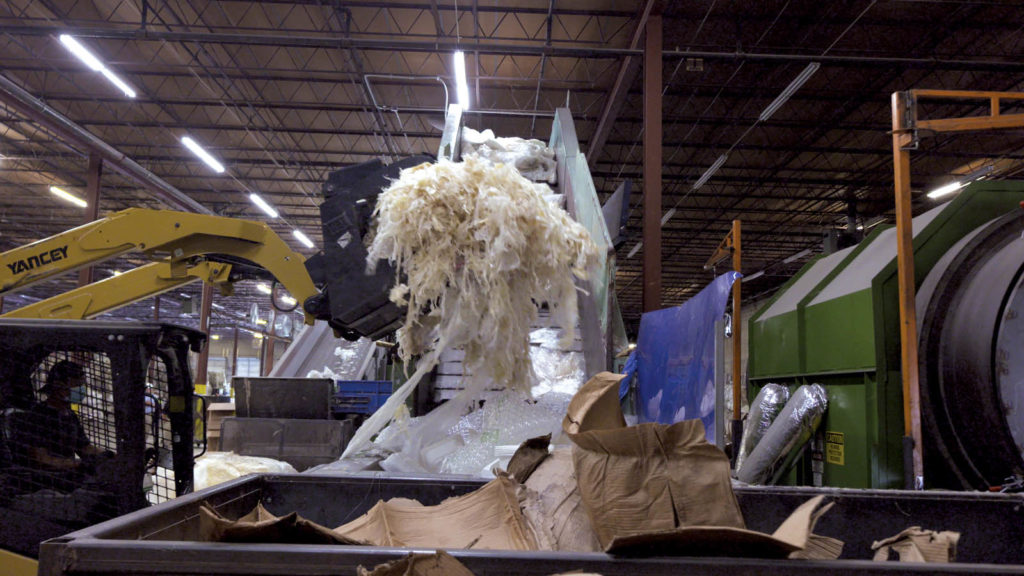
“We tried to focus our efforts in Georgia, South Carolina and Florida, to get a sense of what it would take to do this on a national level,” he adds. Yamaha does not pay for the plastic, but it does cover the cost of the boxes the plastic gets stored in, and for shipping.
“It costs the participants nothing to do this,” explains O’Keefe. “In most cases, they send us plastic in 1,000-pound bales. That’s a thousand pounds that isn’t going to the dump, which normally they would pay for.”
The materials ship to Tommy Nobis Enterprises, an organization that provides job opportunities for people with disabilities, which separates recyclable plastics from other materials, such as plastic zippers, cords and eyelets. From there, the plastic is shipped to Nexus Circular, an end-to-end plastics recycling business headquartered in Atlanta, Ga., for processing into raw materials, which range from gases, liquids and waxes. Those raw materials are used for other products.
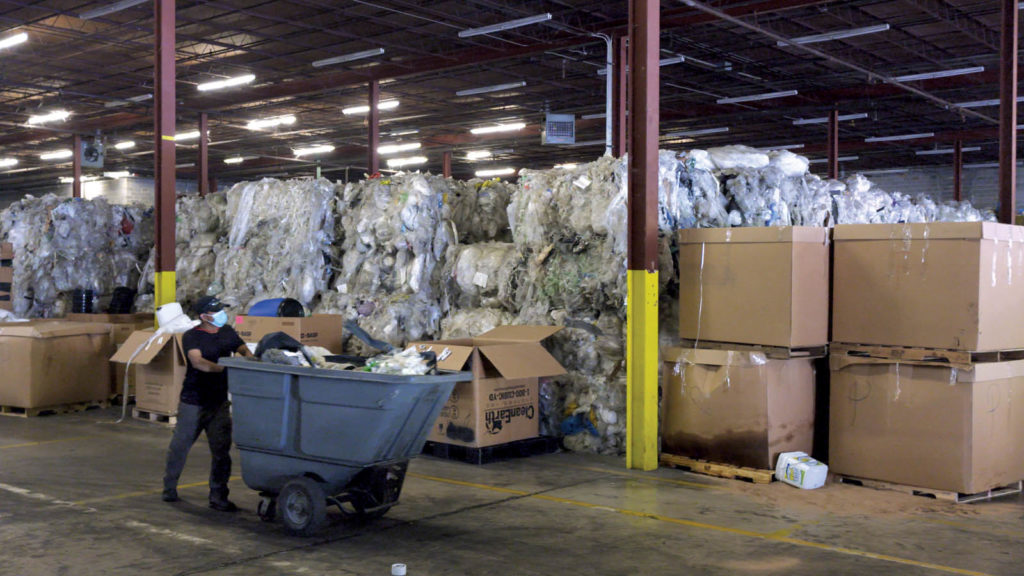
The results from the first year of the program are promising, says O’Keefe—more than 10,000 pounds of polyethylene and polypropylene sheet plastics recycled.
“And we’ve already topped that in 2022, and we’re trending toward 20,000–25,000 pounds,” he says.
“Now we’ll have a leg up on any kind of national legislation that comes out,” says O’Keefe. “We know what needs to be done, and we’re learning what works and what doesn’t. And our customers want to know we care about what’s going on. The reality is there is eight million tons of plastic that ends up in the ocean every year—we need to be responsible for taking care of some of that.”
Jeff Moravec is a freelance writer based in Brooklyn Park, Minn.
SIDEBAR: Circularity pioneers
“Recycling is great, but it is not the answer for the future,” says Elisabeth Isenegger, head of communications at Freitag in Zurich, Switzerland. “That’s why we work on a lot of circularity topics. We’re in the middle of a transition from a recycling pioneer to circularity pioneer.”
One example is what Freitag has done with apparel—for its employees first. “A few years ago, we started a small clothing line, and we were looking for textiles we could provide our workers with,” says Isenegger. “But we didn’t find existing garments that corresponded with our philosophy and our social and ecological requirements.”
So, to develop and design products that would close the biological circle, Freitag hired a team of textile experts to develop clothing that would not only be sustainable but also meet the demands of factory life and still look good. The product, made from resource-saving hemp and linen, is called F-ABRIC.
Anyone who has to part with a F-ABRIC product after many years doesn’t have to toss it in the trash, but rather on the compost pile, says Isenegger. F-ABRIC textiles are 100% naturally biodegradable. A piece of clothing thus becomes fertile soil for new raw materials and the cycle continues.
“When my T-shirt one day is worn out, I can literally put it on my compost heap and plant my salad on it,” says Isenegger.
 TEXTILES.ORG
TEXTILES.ORG


